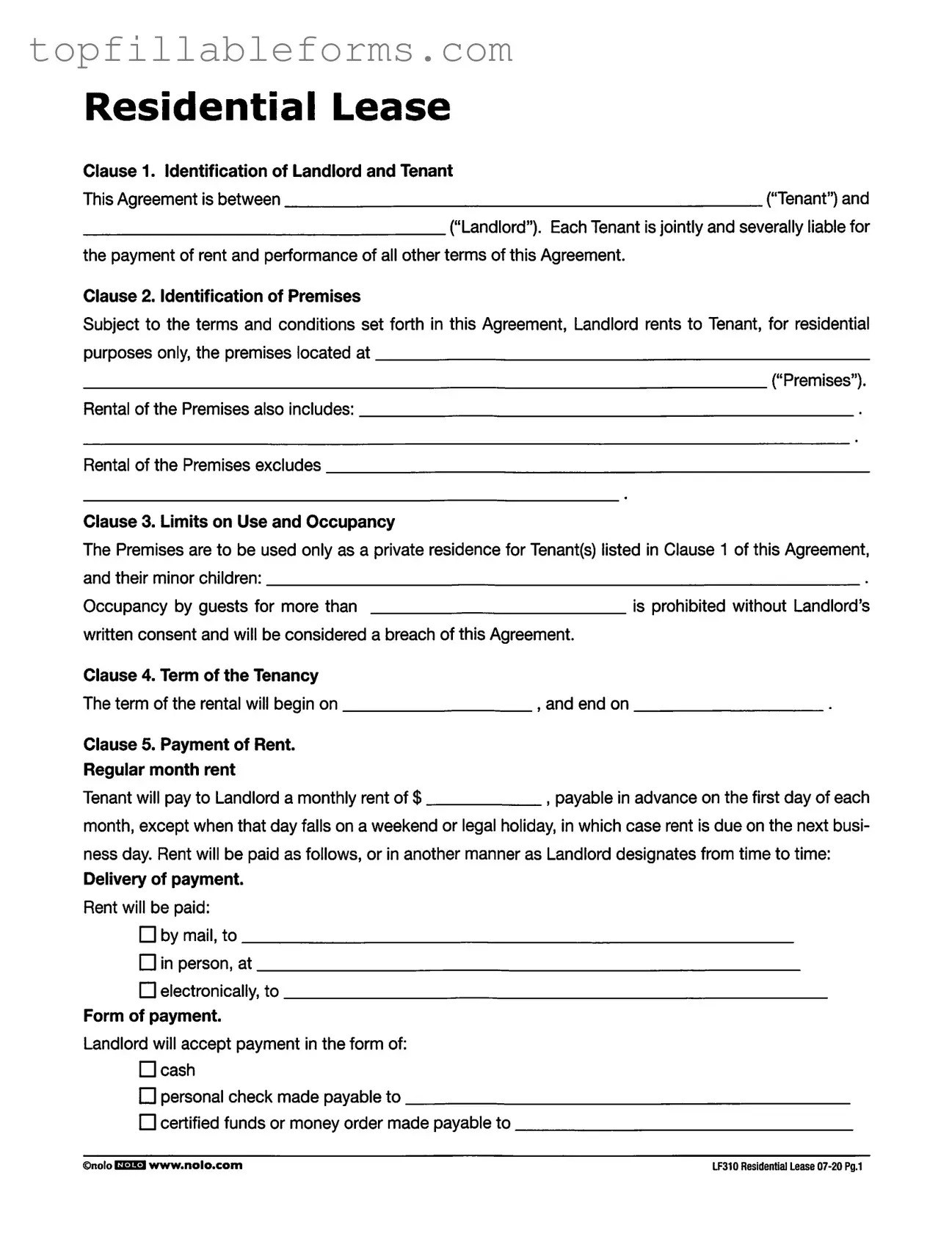Printable Lf310 Residential Lease Form in PDF
The LF310 Residential Lease form is a legal document that outlines the terms and conditions between a landlord and tenant for renting a residential property. This form serves to protect the rights of both parties by clearly defining responsibilities, payment terms, and occupancy rules. Understanding this lease is essential for anyone entering a rental agreement to ensure a smooth and transparent relationship between the landlord and tenant.
Open Lf310 Residential Lease Editor Here










